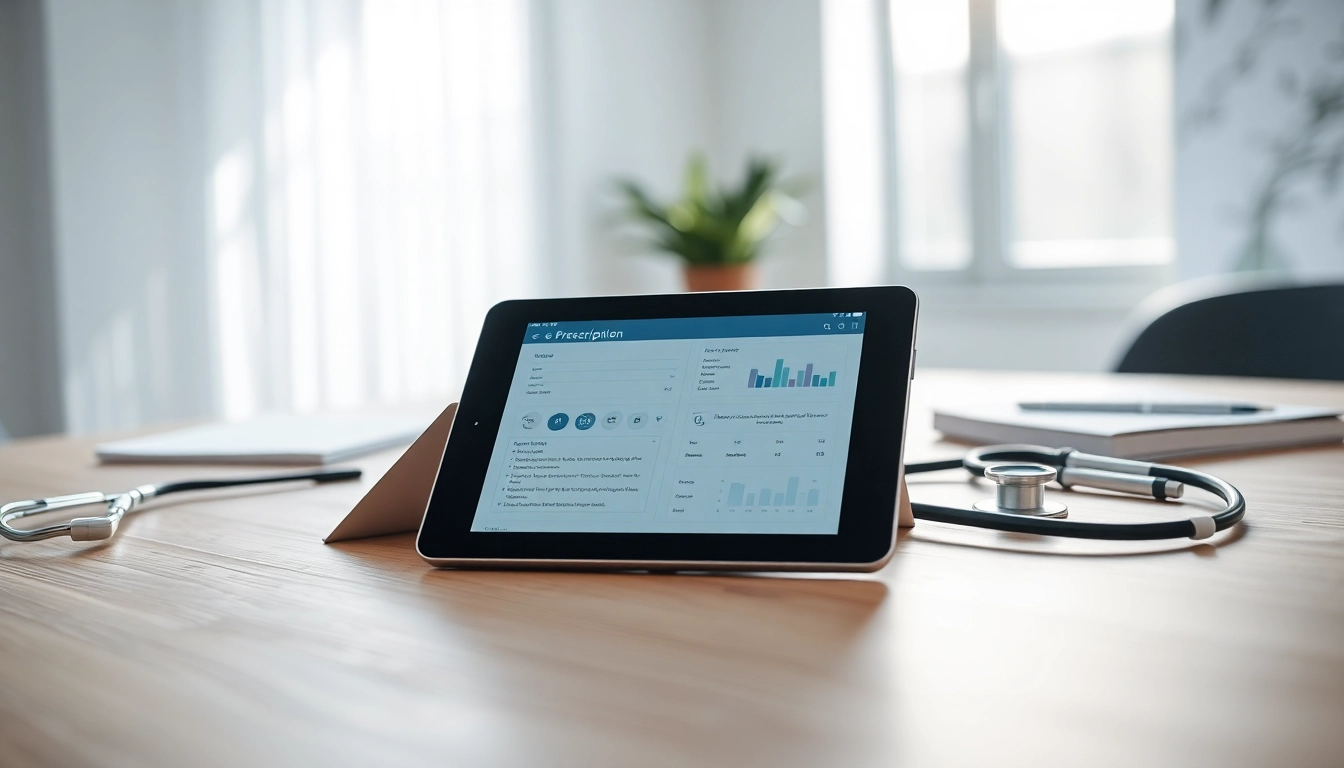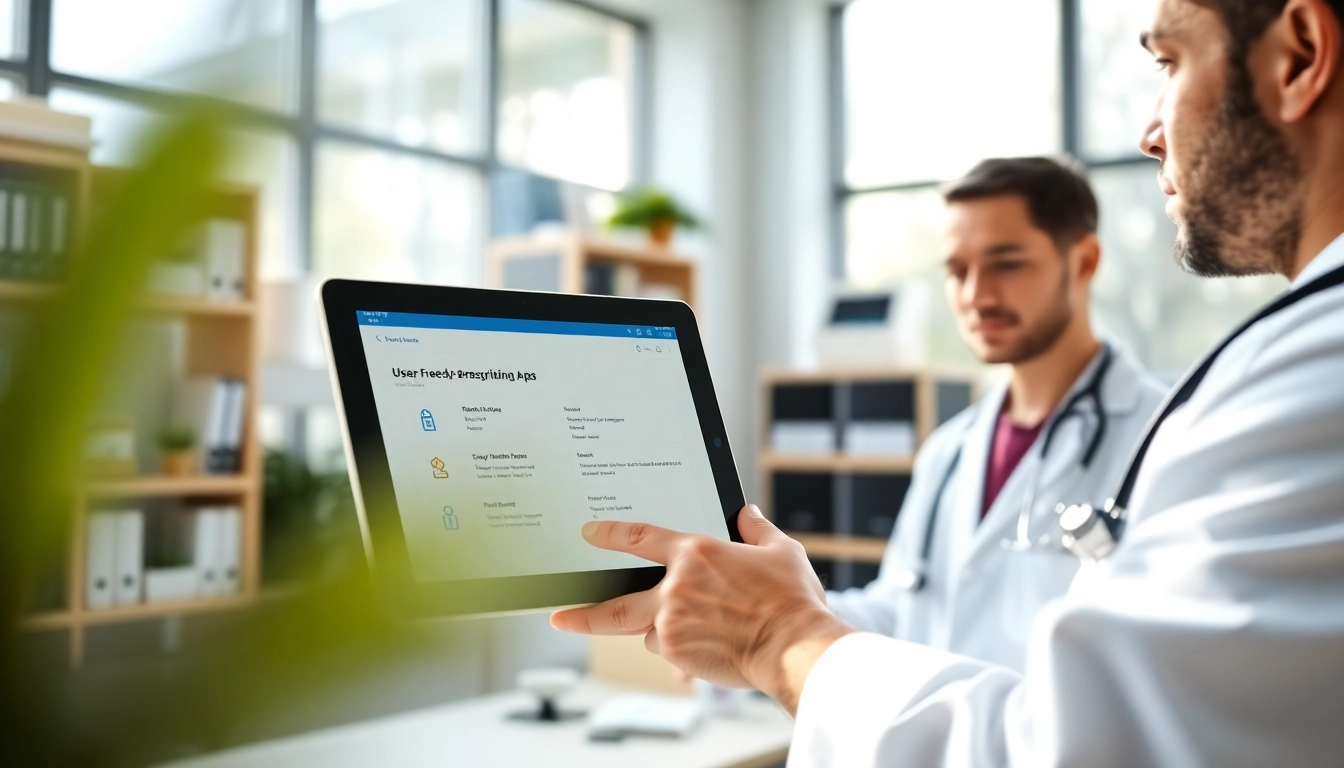Understanding Eprescribing Software for Doctors
What is Eprescribing Software?
Eprescribing software is a digital tool that allows healthcare providers to create, sign, and transmit prescriptions electronically. This software removes the need for traditional paper prescriptions, revolutionizing how doctors manage prescriptions. By enhancing the prescribing process, eprescribing software promotes safety, efficiency, and accuracy in patient care. Providers use this software to streamline workflows, minimize errors associated with handwritten prescriptions, and improve patient medication adherence. The emergence of eprescribing software for doctors has made it easier than ever for medical professionals to navigate the complexities of prescription management in a fast-paced healthcare environment.
Key Benefits of Eprescribing Software for Doctors
The adoption of eprescribing software brings multiple advantages to medical practices:
- Improved Accuracy: Eprescribing software minimizes the risk of errors commonly associated with handwritten prescriptions. Automatic drug interaction checks can alert providers of potential issues before prescriptions are sent.
- Enhanced Efficiency: With a few clicks, doctors can send prescriptions directly to pharmacies. This reduces the time spent on phone calls and simplifies the process of filling medications for patients.
- Increased Patient Safety: By integrating with electronic health records (EHR) systems, eprescribing software provides context for prescribing decisions based on patients’ histories, allergies, and current medications.
- Better Patient Compliance: The software can send reminders to patients regarding medication schedules, improving adherence rates and health outcomes.
- Cost Savings: By reducing prescription errors and streamlining the prescription process, healthcare providers can cut down on overhead costs associated with managing prescriptions.
How Eprescribing Software Integrates into Practice
Eprescribing software seamlessly integrates into existing healthcare practices through various methods:
- Integration with EHR Systems: Eprescribing software can operate within a larger EHR system, allowing for a unified approach to patient data management.
- Connectivity with Pharmacies: Many software options provide direct connections to pharmacies, facilitating the electronic transmission of prescriptions, which speeds up the dispensing process.
- Cross-platform Compatibility: Most eprescribing software can work on multiple devices, including tablets, computers, and smartphones, ensuring accessibility for providers even while on the go.
Choosing the Right Eprescribing Software for Doctors
Factors to Consider When Selecting Software
Selecting the right eprescribing software is crucial for optimizing workflows. Here are several factors to consider:
- Regulatory Compliance: Ensure the software meets federal and state regulations governing narcotic prescriptions and data protection laws.
- Usability: Choose software that is intuitive and easy to use to minimize disruption in your practice during the implementation phase.
- Cost: Evaluate both initial costs and ongoing expenses, including subscription fees, and assess the return on investment the software provides.
- Customer Support: Reliable customer support is essential for addressing issues swiftly to avoid workflow interruptions.
Comparing Features of Popular Eprescribing Software
Each eprescribing software option offers a unique set of features. When comparing different solutions, consider the following:
- Medication History Access: Some software provides real-time access to a patient’s medication history, which is vital for making informed prescribing decisions.
- Drug Interaction Alerts: Built-in alerts can notify prescribers of potential drug interactions based on current patient prescriptions.
- Prescription Tracking: Many systems include features to track prescriptions through to the pharmacy, enabling follow-up on patients’ medication adherence.
- Customizable Templates: Users should look for software that allows for customizable templates to streamline repetitive prescribing tasks.
Evaluating Vendor Support and Training
Support and training are pivotal in ensuring a smooth transition to eprescribing software:
- Vendor Training Programs: Examine available training resources to facilitate software adoption within your practice.
- Ongoing Support: Assess the level of support offered post-implementation, including troubleshooting and updates to software.
- User Community: A robust user community can provide insights and shared experiences, enhancing the overall user experience.
Best Practices for Implementing Eprescribing Software
Steps for Successful Implementation
Implementing eprescribing software requires careful planning and execution. Here are key steps:
- Needs Assessment: Conduct an assessment of your practice’s needs to identify the features that will maximize efficiency and patient safety.
- Vendor Selection: Choose a software provider that aligns with your practice’s needs and goals.
- Implementation Timeline: Develop a timeline for rollout, including phases for training and testing the software.
- Monitoring and Feedback: After implementation, continuously monitor the system’s performance and gather feedback from users to address any issues promptly.
Training Staff on Eprescribing Software
Efficient training guarantees that all staff members are proficient in using eprescribing software:
- Structured Training Programs: Implement a detailed training program customized to the needs of different staff roles within the practice.
- Hands-on Practice: Allow staff to practice on the software in a safe environment before it goes live.
- Documentation: Provide easy-to-follow manuals or online resources that staff can reference as needed.
Ensuring Compliance and Security
Maintaining patient privacy and data security is paramount for healthcare practices:
- Data Encryption: Ensure that the software employs robust encryption to protect sensitive patient information.
- Access Controls: Use role-based access controls to limit who can see and modify patient records.
- Regular Audits: Conduct regular audits of the system to ensure compliance with healthcare regulations and standards.
Real-world Examples of Eprescribing Software for Doctors
Case Studies of Improved Workflow
Implementation of eprescribing software can yield significant improvements in practice workflows:
For example, a small clinic that transitioned to eprescribing reported a reduction in prescription errors by 70%. The streamlined process allowed them to reduce prescription turnaround time dramatically, contributing to enhanced patient satisfaction as clients could receive medications faster.
Impact on Patient Satisfaction
Patient satisfaction is greatly influenced by the efficiency of the prescribing process. Surveys reveal that practices utilizing eprescribing software experience higher satisfaction ratings among patients, stemming from shorter wait times for prescriptions and a clearer understanding of their medication regimens.
Feedback from Healthcare Professionals
Healthcare professionals report that eprescribing software enhances their ability to manage patient medications effectively. Many note that the integrated features, such as alerts for drug interactions and access to patients’ medication histories, improve confidence in prescribing decisions.
Future Trends in Eprescribing Software for Doctors
Advances in Technology and User Interface
The future of eprescribing software is poised for exciting developments, particularly due to technological advancements. Key trends include:
- AI Integration: Artificial Intelligence will play a larger role in predicting potential issues with prescriptions based on patient data and previous trends.
- Improved User Interfaces: Continued focus on creating user-friendly interfaces ensures that healthcare providers can navigate the software without hindrance.
Integration with Other Healthcare Solutions
Future eprescribing software will likely feature enhanced capabilities for integration with other healthcare solutions, such as telehealth platforms, allowing for a seamless workflow across various modes of patient interaction. This interconnectedness will facilitate better coordination of care and improve overall health outcomes.
The Role of Telehealth in Eprescribing
As telehealth continues to grow, eprescribing software will become essential in remote patient management. Doctors will be able to evaluate, diagnose, and prescribe medications without the need for in-person visits, a convenience that will promote greater access to healthcare services.



